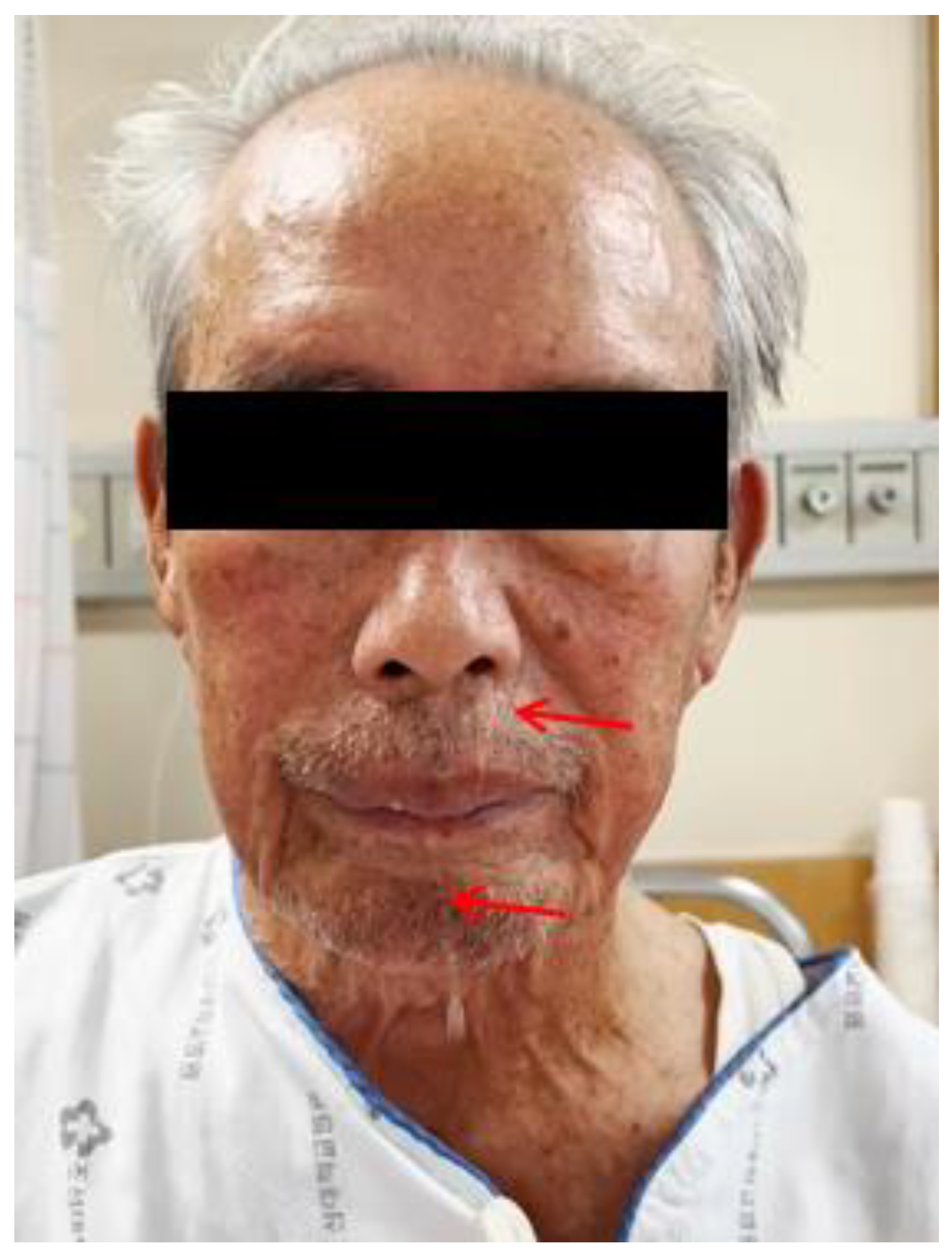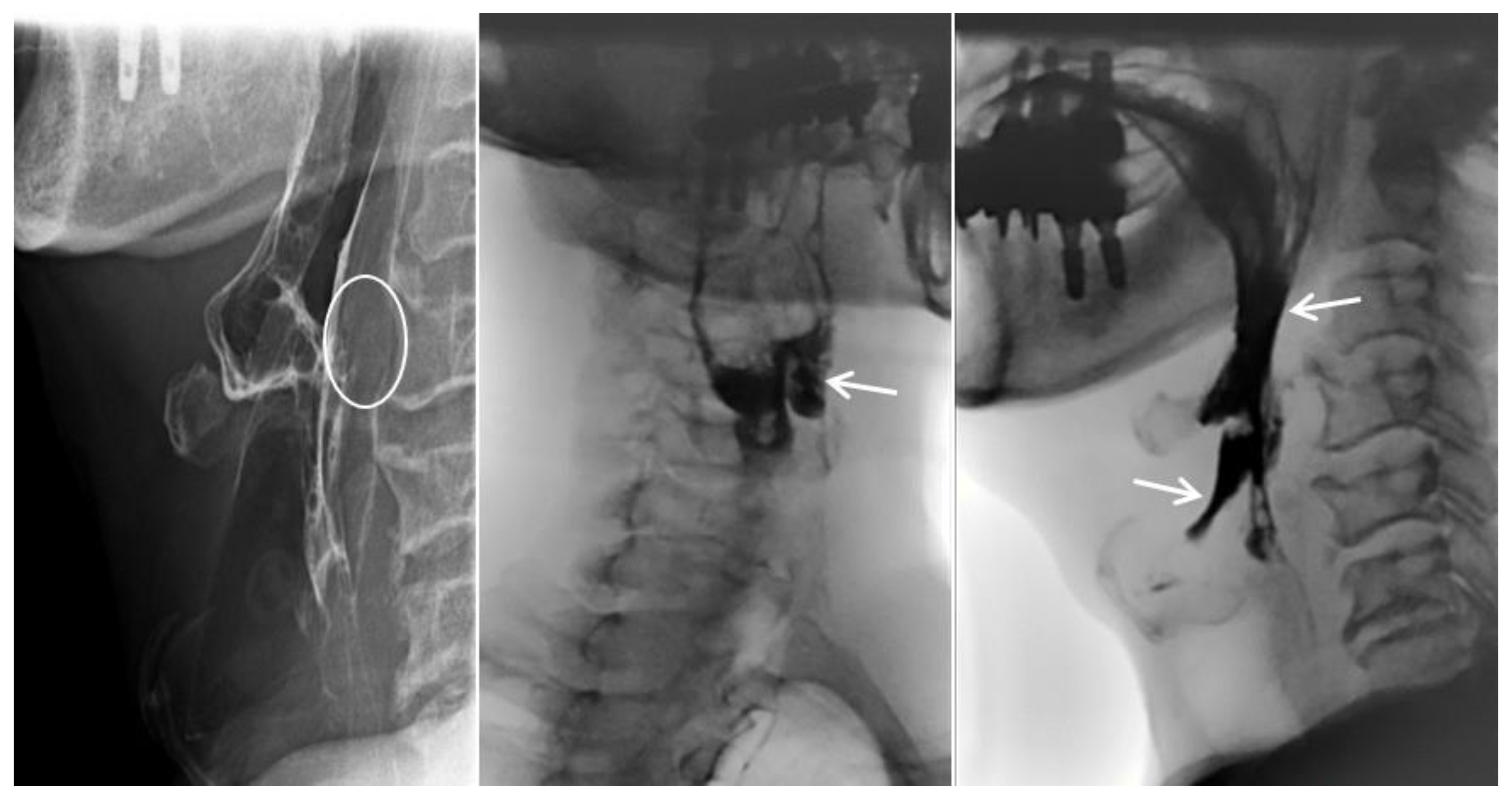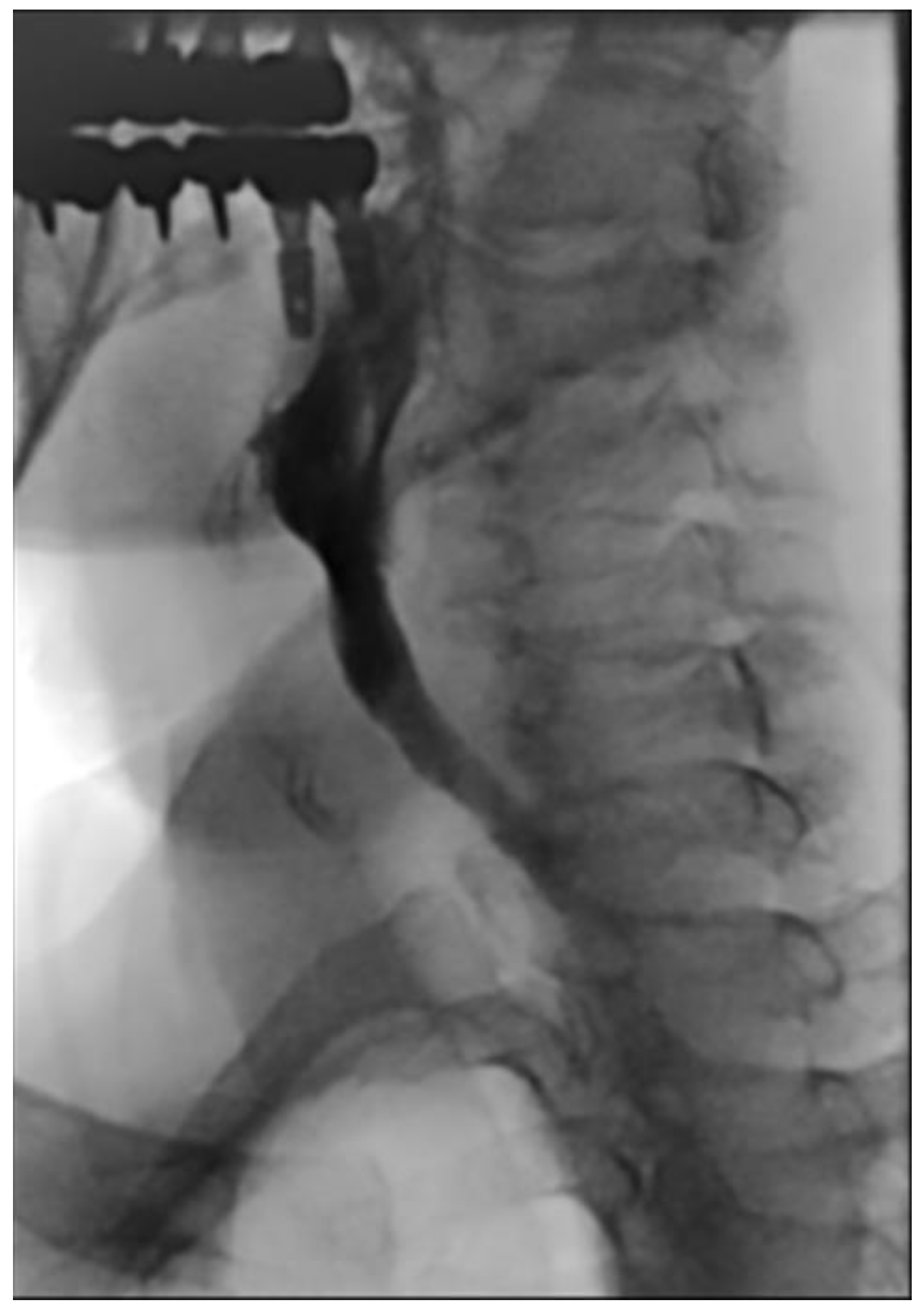Traumatic Anterior Cervical Disc Herniation Presenting as Severe Dysphagia
Abstract
:Author Contributions
Funding
Institutional Review Board Statement
Informed Consent Statement
Conflicts of Interest
References
- Andersen, P.M.; Fagerlund, M. Vertebrogenic dysphagia and gait disturbance mimicking motor neuron disease. J. Neurol. Neurosurg. Psychiatry 2000, 69, 560–561. [Google Scholar] [CrossRef]
- Miyamoto, K.; Sugiyama, S.; Hosoe, H.; Iinuma, N.; Suzuki, Y.; Shimizu, K. Postsurgical recurrence of osteophytes causing dysphagia in patients with diffuse idiopathic skeletal hyperostosis. Eur. Spine J. 2009, 18, 1652–1658. [Google Scholar] [CrossRef] [PubMed]
- Bernardo, K.L.; Grubb, R.L.; Coxe, W.S.; Roper, C.L. Anterior cervical disc herniation. Case report. J. Neurosurg. 1988, 69, 134–136. [Google Scholar] [CrossRef] [PubMed]
- Coventry, M.B. Calcification in a cervical disc with anterior protrusion and dysphagia. A case report. J. Bone Joint Surg. Am. 1970, 52, 1463–1466. [Google Scholar] [CrossRef] [PubMed]
- Kim, D.Y.; Park, Y.S.; Jeong, J.H. Anterior Cervical Disc Herniation Presenting as Instability and Minimal Dysphagia: A Case Report. Korean J. Spine 2010, 7, 272–275. [Google Scholar]





Disclaimer/Publisher’s Note: The statements, opinions and data contained in all publications are solely those of the individual author(s) and contributor(s) and not of MDPI and/or the editor(s). MDPI and/or the editor(s) disclaim responsibility for any injury to people or property resulting from any ideas, methods, instructions or products referred to in the content. |
© 2023 by the authors. Licensee MDPI, Basel, Switzerland. This article is an open access article distributed under the terms and conditions of the Creative Commons Attribution (CC BY) license (https://creativecommons.org/licenses/by/4.0/).
Share and Cite
Seo, J.; Oh, J.; Kim, P.; Ju, C.I.; Kim, S.W. Traumatic Anterior Cervical Disc Herniation Presenting as Severe Dysphagia. Diagnostics 2023, 13, 3644. https://doi.org/10.3390/diagnostics13243644
Seo J, Oh J, Kim P, Ju CI, Kim SW. Traumatic Anterior Cervical Disc Herniation Presenting as Severe Dysphagia. Diagnostics. 2023; 13(24):3644. https://doi.org/10.3390/diagnostics13243644
Chicago/Turabian StyleSeo, Jonghun, Jeonghyun Oh, Pius Kim, Chang Il Ju, and Seok Won Kim. 2023. "Traumatic Anterior Cervical Disc Herniation Presenting as Severe Dysphagia" Diagnostics 13, no. 24: 3644. https://doi.org/10.3390/diagnostics13243644
APA StyleSeo, J., Oh, J., Kim, P., Ju, C. I., & Kim, S. W. (2023). Traumatic Anterior Cervical Disc Herniation Presenting as Severe Dysphagia. Diagnostics, 13(24), 3644. https://doi.org/10.3390/diagnostics13243644






